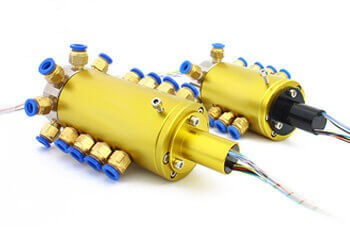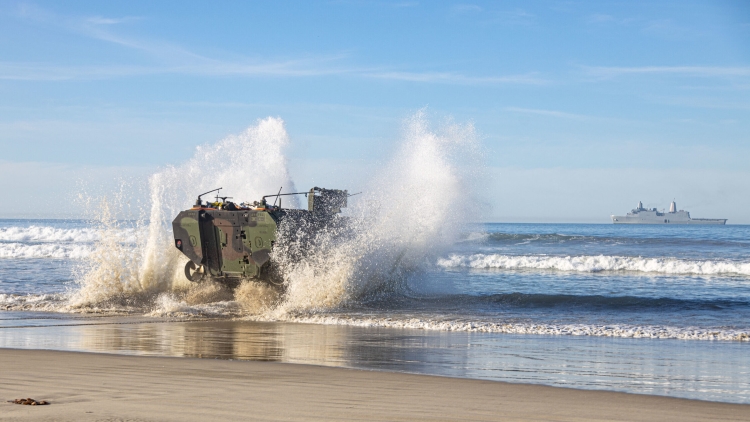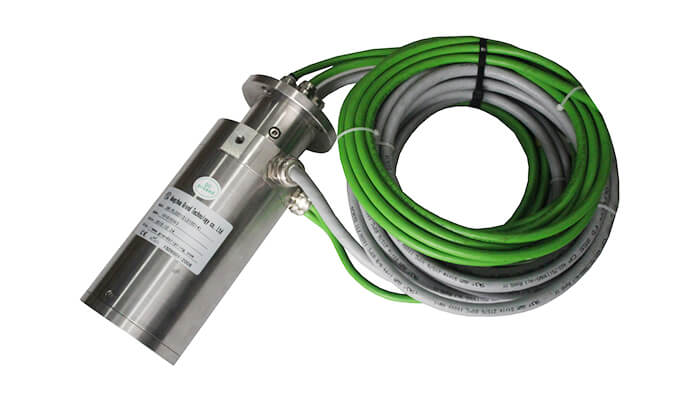This comprehensive guide aims to shed light on the critical component in hydraulic systems – the Rotary Coupling Hydraulic. From fundamental principles to the latest technological innovations, we will journey through every facet, addressing common concerns and highlighting usage applications in various industries.
Introduction to Rotary Coupling Hydraulic
Rotary Coupling Hydraulic is a specialized mechanical device employed in a vast array of applications. The primary function of this device is to facilitate the transfer of hydraulic fluid between two points in a machinery or system, which allows motion to be transmitted from one component to another. One of the key attributes of a rotary hydraulic coupling is its ability to maintain connections and fluid transmission while the machinery parts are in constant rotational motion. In other words, it’s a bridge that seamlessly joins stationary and rotating parts in a hydraulic system, ensuring uninterrupted functionality and efficiency.
The significance of Rotary Coupling Hydraulics cannot be overstated, given their vital role in several industries. Industries such as construction, manufacturing, aerospace, marine, and medical heavily rely on these couplings to maintain the overall efficiency and functionality of their machinery. In construction machinery, for instance, they help in the rotational movements of the digger arms, while in marine applications, they aid in managing the propeller systems. They’re the unsung heroes behind the smooth operation of many state-of-the-art technologies that we frequently use but seldom acknowledge.
The article will delve into various facets of Rotary Coupling Hydraulics. Beginning with an exploration of the fundamental working principles, we will then move on to a discussion of the different types of rotary hydraulic couplings, each with its unique characteristics and functionalities. Following this, we will delve deeply into the factors to consider when choosing a rotary hydraulic coupling, shedding light on the wide range of applications and industries that these components serve. Practically oriented readers will find value in the section focused on installation and maintenance tips, while those curious about the innovations will appreciate our coverage of the latest advances and future trends in the field. We will round off with a section dedicated to frequently asked questions to address any common concerns or misunderstandings about Rotary Coupling Hydraulics. Our goal is to offer a comprehensive perspective and guide on Rotary Coupling Hydraulics for professionals, students, and enthusiasts alik.

Basic Principles of Rotary Coupling Hydraulics
The fundamental operating principle of hydraulic couplings, particularly rotary types, hinges on their ability to transmit hydraulic fluid—in essence, power—between stationary and moving parts of a machine with minimal loss of efficiency or fluid leakage. At their core, rotary couplings consist of two main components: the stator, which remains fixed, and the rotor, which rotates. These two components are intricately designed to form a continuous passageway for the hydraulic fluid. As the rotor turns, it maintains a constant, leak-proof connection with the stator, ensuring a steady flow of hydraulic fluid through the system. This ingenious design leverages the properties of hydraulic fluids to transmit mechanical power efficiently across rotating boundaries.
In the grand tapestry of hydraulic systems, rotary couplings serve a pivotal role. They emerge as critical links that ensure the transfer of hydraulic fluid in systems requiring rotational motion. Think of the rotating part of an excavator’s arm or the swivel base of a crane; these movements are facilitated by hydraulic couplings that allow for the continuous flow of power while parts of the machinery rotate freely. Thus, rotary couplings are indispensable in applications where it is essential to combine rotational motion with hydraulic power transfer, providing a seamless and efficient operation that is vital for the functionality of various mechanical systems.
The technical specifications of rotary couplings are diverse and cater to a wide range of industrial needs. These specifications can include the coupling’s maximum rotational speed, which dictates how fast the coupling can operate without compromising its functionality or integrity. Pressure rating is another critical specification, indicating the maximum hydraulic pressure the coupling can withstand. Additionally, the flow rate must be considered, as it determines the volume of fluid that can pass through the coupling within a certain time frame. The choice of materials, from metals to advanced polymers, plays a crucial role in ensuring durability and compatibility with different types of hydraulic fluids.
These specifications are not arbitrary but are carefully crafted to meet the demands of various applications, ensuring that each coupling can perform under the expected operating conditions. They encompass a broad array to ensure that for virtually any application—be it in the heavy vibrations of construction equipment or the precise movements in aerospace engineering—there is a rotary coupling that meets the exact requirements of pressure, speed, and environmental resilience.
Understanding these basic principles and technical specifications of rotary hydraulic couplings offers valuable insight into their functionality and critical role within larger hydraulic systems, emphasizing the importance of selecting the right coupling for specific applications to ensure optimal performance and longevity.
Types of Rotary Hydraulic Couplings
Rotary hydraulic couplings are essential components designed to facilitate fluid transfer in complex systems. Their types are generally categorized based on the flow path and the mechanical design catered to specific applications. The primary types include single-pass and multi-pass couplings, among others, each serving a unique purpose within various hydraulic systems.
Single-Pass Rotary Couplings
Single-pass rotary couplings are designed to transfer fluid in one direction, from a single inlet to a single outlet. These couplings are straightforward in their design and are primarily used when a simple transfer of fluid across a rotating interface is required. Their simplicity is a significant advantage, as it allows for a robust and less complicated mechanism that is cost-effective and easy to maintain. Yet, the simplicity also means limited versatility, as it cannot accommodate multiple fluid channels or support bidirectional flow.
Multi-Pass Rotary Couplings
In contrast, multi-pass rotary couplings offer enhanced functionality by providing multiple independent passages. These passages can transfer various fluids, gases, or a combination thereof simultaneously without any cross-contamination. This versatility is indispensable in complex machinery where different processes occur synchronously, such as in plastic molding equipment or multi-function drilling rigs. The primary trade-off for this expanded capability is increased complexity, which can result in higher costs for purchase and maintenance, as well as a larger size that limits its use in compact spaces.
Application-Specific Designs
Application-specific rotary couplings are tailored to the finer requirements of specific industries or applications. For instance, high-pressure designs are engineered to withstand the stresses associated with heavy industrial work, like mining and construction hydraulics, ensuring safety and reliability even under extreme conditions. Conversely, low-torque designs may be employed in precision instrumentation, where minimal resistance to rotation is crucial.
Compact designs are gaining traction in industries where space is at a premium. Medical equipment and aerospace applications are perfect examples, where every cubic centimeter must be optimized. These designs often employ advanced materials and engineering feats to provide the desired performance in a much smaller footprint.
Pros and Cons in Different Settings
The distinction between each type of rotary hydraulic coupling reveals a wide spectrum of use cases and settings where they can be applied with varying degrees of efficiency.
Single-pass couplings are ideal for simple, straightforward applications that require cost-effectiveness and ease of maintenance; however, they may fall short in complex systems with multiple fluid transfer requirements.
Multi-pass couplings provide a solution to complex flow requirements and are valued for their multi-functionality. However, they can be costlier and may require more intensive maintenance due to their elaborate design, which can also make them bulkier and unsuitable for tight spaces.
The specialized designs of application-specific rotary couplings solve unique challenges such as high pressure, low torque, or space limitations, yet each comes with trade-offs in terms of cost, maintenance complexity, or design constraints.
In choosing the right type of rotary hydraulic coupling, engineers and designers must balance these pros and cons against the specific requirements of the application—whether it’s the simplicity of a single-pass coupling for uncomplicated fluid transfer, the versatility of a multi-pass coupling for intricate systems, or the tailored specifications of unique industrial applications. Understanding these trade-offs helps in selecting a rotary hydraulic coupling that delivers the best performance and value within a particular context.
Key Features to Consider When Selecting a Rotary Hydraulic Coupling
The selection of a rotary hydraulic coupling is critical for ensuring the efficiency and reliability of a hydraulic system. Several key features need to be considered to make an informed decision. These considerations can significantly impact the performance, longevity, and overall functionality of the system in which they are deployed.
Size and Dimensions
The physical size and dimensions of a rotary hydraulic coupling are paramount, as they directly influence the coupling’s compatibility with the existing machinery or system. It is not merely about ensuring it fits within the designated space but also about matching the port sizes and shapes to the connecting hoses or pipes. An incorrect fit can lead to leaks or reduced performance. Additionally, the size often correlates with the flow rate and pressure capacity; larger couplings may support higher flows or pressures, so these factors are often considered in tandem.
Pressure Capacity
The pressure capacity of a rotary hydraulic coupling determines the maximum hydraulic pressure it can withstand. This is crucial for ensuring the safety and integrity of the hydraulic system, especially in high-pressure applications found in industries such as mining or construction. Selecting a coupling that can handle the system’s operational pressure, with a suitable margin for safety, helps prevent leakage, burst pipes, or catastrophic failure of the coupling itself.
Flow Rate
Flow rate refers to the volume of fluid that can pass through the coupling per unit of time, typically measured in gallons per minute (GPM) or liters per minute (LPM). It is crucial to match the flow rate capability of the coupling with the requirements of the system to ensure optimal performance. A mismatch can result in inefficient system operation, with either a bottleneck that restricts flow or an oversized coupling that adds unnecessary bulk and cost.
Material and Durability
Materials used in the construction of a rotary hydraulic coupling directly affect its durability and compatibility with the hydraulic fluid used in the system. Common materials include steel, stainless steel, brass, and advanced polymers or plastics. The chosen material should resist wear, corrosion, and any chemical interactions with the hydraulic fluid. For harsh environments or heavy-duty applications, more robust materials like stainless steel might be necessary, while lighter-duty applications may permit the use of less expensive materials.
Sealing Technology
The technology used to seal the rotating connection in a hydraulic coupling is a critical feature that determines the coupling’s efficiency and longevity. High-quality seals minimize leaks and maintain fluid integrity, even under high pressure or during rapid rotational movements. Types of sealing technologies vary, including O-rings, lip seals, and mechanical seals, each with its specific applications, advantages, and maintenance requirements.
Maintenance Requirements
Finally, understanding the maintenance needs of a rotary hydraulic coupling is essential for minimizing downtime and ensuring long-term reliability. Some couplings are designed to be maintenance-free, while others may require regular lubrication, seal replacement, or other forms of upkeep. The selection should consider the operational environment and the ability to perform maintenance tasks, with a preference for designs that align with the system’s maintenance capabilities and schedules.
In summary, selecting the right rotary hydraulic coupling involves a delicate balance of technical specifications, operational demands, and maintenance capabilities. By carefully considering each of these key features—size and dimensions, pressure capacity, flow rate, material and durability, sealing technology, and maintenance requirements—designers and engineers can ensure the optimal selection of a rotary hydraulic coupling that will deliver performance, reliability, and longevity in any hydraulic system.
Rotary Coupling Hydraulic Applications and Industries
Rotary hydraulic couplings are used across a broad spectrum of applications and industries, each with specific requirements and challenges. The adaptability of these devices to varied environments underscores their importance in modern machinery and systems.
Mobile Hydraulics in Construction Machinery
In the field of construction, mobile hydraulics play a cornerstone role, with rotary hydraulic couplings being pivotal for machinery such as excavators, loaders, and cranes. These machines often require precise movement of their articulated arms or rotation of entire sections while maintaining hydraulic fluid flow. The couplings enable construction machinery to perform complex tasks like lifting, digging, and rotating without hindrance, even under the harsh conditions and extreme pressure typical of construction sites. The durability and robustness of couplings used in this context are paramount as they directly impact the efficacy and safety of critical infrastructure projects.
Industrial Machinery and Automation Systems
Within the realm of industrial machinery and automation, rotary hydraulic couplings contribute to a wide array of applications, including production lines, robotics, and complex manufacturing processes. These systems often require the transmission of hydraulic power to components that move rotationally or to tools that need to operate in a 360-degree range. The precision and reliability of couplings in these applications are critical, as any downtime or failure can lead to significant production losses. As automation and robotics continue to advance, the demand for highly reliable and efficient couplings in these settings will only rise.

Aerospace and Defense
The aerospace and defense industries utilize rotary hydraulic couplings in various capacities, spanning from actuation systems for flight control surfaces to the operation of landing gear and weapon systems. In these applications, the couplings are subjected to extreme conditions, including high pressures, wide temperature ranges, and the need for absolute reliability. Additionally, these industries often require specialized materials and designs to meet stringent safety standards and to minimize weight without sacrificing performance.

Maritime Applications
At sea, rotary hydraulic couplings are employed in various marine vessels and offshore platforms, incorporating steering systems, winches, and control systems for subsea operations. The corrosive maritime environment demands couplings made from materials resistant to saltwater corrosion and capable of withstanding the constant motion and pressure changes experienced at sea. These applications underscore the need for coupling designs that not only provide reliable and leak-free performance but also withstand the rigors of a maritime environment.

Medical Devices Requiring Hydraulic Control
In the healthcare industry, precision is key, and hydraulic couplings are used in numerous medical devices such as surgical tools, patient lifts, and operating tables. These applications often require compact couplings that can fit into tight spaces and operate smoothly without introducing contaminants. For medical devices, couplings must not only adhere to strict cleanliness standards but they must also be made from materials compatible with sterilization processes and resistant to various cleaning agents.
In each of these industries, the choice of rotary hydraulic coupling involves a deep understanding of the operational context. The coupling must align with the pressure, flow, and environmental demands of the application. Durability, reliability, and precision are universally important across these sectors, but additional factors such as weight, corrosion resistance, or sterility may be paramount in specific applications. As technology progresses and demands evolve, the characteristics and capabilities of rotary hydraulic couplings will continue to be refined to meet the specialized needs of these diverse industries.
Rotary Coupling Hydraulic Installation and Maintenance Tips
Proper installation and diligent maintenance are crucial factors in ensuring the longevity and performance of rotary hydraulic couplings. The guidance below offers essential tips for best installation practices, routine maintenance, troubleshooting common issues, and guidelines for ensuring optimal performance over time.
Best Practices for Installing Rotary Hydraulic Couplings
Installation of rotary hydraulic couplings should be conducted following the manufacturer’s specific instructions, which typically include the following general practices:
- Confirm it is the correct coupling: Check the coupling’s specifications against the system’s requirements to ensure compatibility.
- Prepare the environment: Ensure the installation area is clean and free of contaminants that could infiltrate the system and cause wear or blockages.
- Install with care: Any wrenching on a rotary coupling should be avoided because it can cause misalignment or damage to mechanical seals.
- Align properly: Correct alignment of the coupling with the connected components is crucial to avoid undue stress or wear during operation.
- Check for leaks: Once installed and connected with the hydraulic system, a preliminary check for leaks should be carried out to ensure secure connections.
Routine Maintenance Recommendations
Rotary couplings benefit from regular preventative maintenance, generally involving:
- Regular inspection: This will help you spot leaks, abnormal wear, or other signs of damage early on, allowing for repair or replacement before major issues arise.
- Lubrication: Keeping the coupling lubricated as per the manufacturer’s guidelines can minimize wear and prolong the unit’s life.
- Check seals: Seals are susceptible to wear and can eventually fail, so checking them for signs of wear and replacing them when needed is essential.
- Cleanliness: Maintaining a clean environment reduces the risk of dirt or other particles causing damage.
Troubleshooting Common Issues
Knowing how to quickly diagnose and rectify common issues can save significant time and prevent more severe damage:
- Leaks: These often signify worn seals, improper alignment, or issues with connection tightness. Identifying the leak source will inform the corrective action needed.
- Noise or vibration: These symptoms could indicate improper alignment, worn parts, or a malfunction.
- Reduced performance: This may hint at a blockage somewhere within the system or worn-out components.
Guidelines for Longevity and Optimal Performance
To attain the best performance and extend the life of a rotary hydraulic coupling, consider the following:
- Use according to specifications: Operating the coupling within its specified pressure, temperature, and rotational speed is critical.
- Regular maintenance: As discussed, regular inspections and prompt attention to any potential issues can prevent premature wear or failure.
- Trained personnel: Ensure installation, operation, and maintenance of the coupling are carried out by trained professionals.
By following these best practices for installation, routine maintenance, troubleshooting, and performance optimization, you can enhance the longevity and reliability of your rotary hydraulic couplings. These guidelines, coupled with adherence to the specific manufacturer’s instructions, will ensure the efficient operation of rotary hydraulic couplings in various applications and industrial settings.
Rotary Coupling Hydraulic Technological Advances and Innovations
The evolution of rotary coupling technology is shaped by the growing demands for efficiency, reliability, and environmental sustainability. These demands drive innovation in design, materials, and functionality, reflecting a more responsive and responsible approach to hydraulic system development.
Recent Technological Advancements in Rotary Coupling Designs
Modern rotary hydraulic couplings have seen significant design improvements to meet the rigorous demands of diverse industries. Advancements often focus on enhancing the load capacity and service life of these crucial components:
- High-Pressure Designs: Newer models can withstand extremely high pressures with minimal leakage, making them suitable for more strenuous applications.
- Compact and Lightweight: Advancements in material sciences have led to stronger, yet lighter and smaller, designs, crucial for aerospace and mobile applications where space and weight are at a premium.
- Improved Sealing Technologies: The sealing mechanisms have become more robust, ensuring better leak prevention and reducing maintenance needs, resulting in lower long-term operating costs.
Smart Couplings with Integrated Sensors
As the industrial sector moves towards more intelligent machinery, rotary hydraulic couplings have not been left behind:
- Embedded Sensors: These couplings can now come equipped with sensors that monitor several parameters such as temperature, pressure, and flow rate. By relaying this data in real-time, smart couplings enable predictive maintenance strategies, allowing for interventions before failures occur.
- IoT Connectivity: With the rise of the Internet of Things (IoT), couplings with wireless connectivity can transmit operational data to centralized management systems, ensuring optimal performance, reducing downtime, and integrating with broader smart industry practices.
Environmental Considerations and Improvements
The emphasis on sustainability has led to a rethinking of how rotary hydraulic couplings are made and operate:
- Leak Prevention: The environmental impact of leaks, both in terms of fluid waste and environmental contamination, has driven the development of advanced sealing technologies and materials that offer tighter controls and self-sealing capabilities in the event of a fault.
- Eco-friendly Materials: The shift towards materials that are less environmentally damaging, both in manufacturing and operation, is evident in new couplings. The use of recyclable or less polluting materials is becoming more common.
- Energy Efficiency: Design efficiencies, such as reduced friction and optimized flow paths, mean that modern rotary couplings can contribute to overall energy savings for hydraulic systems.
Innovation in rotary hydraulic couplings is an ongoing process, with each advancement building upon the last to create more sophisticated, reliable, and environmentally sound components. This drive toward improvement runs parallel with the broader industrial goals of automation, data integration, and sustainability. As technology continues to advance, future designs will likely be marked by further energy efficiency, advanced diagnostic capabilities, and a continued focus on reducing environmental impact.
Conclusion
Understanding and choosing the right rotary hydraulic couplings is pivotal for maximizing the efficiency of a hydraulic system. As technology advances, make it a point to stay updated with innovations beneficial to your specific application. Begin today by understanding the fundamentals, and stride towards smarter, efficient, and more eco-friendly hydraulic systems.
FAQs about Rotary Coupling Hydraulic
Q: What are common leakage issues?
A: With proper maintenance and regular checks, leakage problems can be mitigated. Look out for worn-out seals, which are commonly the culprits.
Q: How does application specificity influence coupling choice?
A: Each application presents unique demands. Factors such as pressure, flow, rotational speed, and connection specifications play decisive roles in the choice of coupling.
Q: What are the recommended safety precautions?
A: Employ standard safety measures such as ensuring compatible coupling materials to prevent chemical reactions and using couplings within their stipulated pressure and temperature limits.
Q: What causes leakage in rotary hydraulic couplings?
A: Several factors may contribute to leakage. The seals may be worn or damaged, or there might be an issue with the alignment of the components connected by the coupling. Improper installation can also cause leakage.
Q: How can wear and tear on a rotary hydraulic coupling be minimized?
A: Regular inspection and routine maintenance are key to minimizing wear and tear. This includes proper lubrication, keeping the system clean of contaminants, and ensuring the coupling is operating within its specified parameters (pressure, temperature, rotational speed).
Q: Is compatibility an issue with rotary hydraulic couplings?
A: Yes, you must ensure the coupling’s specifications (like pressure rating, size, and materials of construction) match the requirements of your system. Using a coupling not suited for your system can lead to inefficiencies, component damage, or even system failure.
Q: How can I choose the right rotary coupling for my application?
A: Consider your application’s needs such as operating pressure, fluid type, environmental conditions (temperature, exposure to elements), space constraints, and required rotational speed. Also, consider the coupling’s reliability, lifecycle, and maintenance requirements.
Q: Are there any safety precautions and regulatory requirements associated with rotary hydraulic couplings?
A: Safety precautions include careful installation and regular inspection to avoid system failures that could potentially be hazardous. Regulatory requirements can vary based on the specific industry and application. It’s crucial to fully understand the relevant standards and regulations in your sector.
Q: How often should a rotary hydraulic coupling be cleaned or replaced?
A: The cleaning and replacement schedule mainly depends on the operating conditions. Regular inspections will help determine when cleaning is necessary. As for replacement, this should be done when wear or damage is detected or when system performance decreases. Following the manufacturer’s guidelines provides a benchmark for these maintenance activities.


